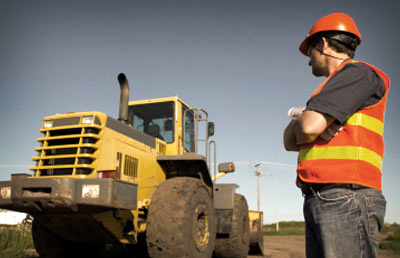
Glider kits have been used to save on the Federal Excise Tax (FET) on the sale of new construction machinery, but recent IRS guidance suggests they may no longer be considered a valid exemption.
Glider kits have historically been an excellent alternative for construction companies to restore wrecked or worn out units at a fraction of the cost of a comparable new unit. Kits can be purchased in various stages of completion, but most consist of a new cab and chassis. From there, the customer can choose to re-use the major components from an existing vehicle (“donor vehicle”) to build a refurbished truck or select new or re-manufactured components, such as engines, transmissions, or axles. The amount of new, re-manufactured, or used components in the finished unit can vary depending upon the condition of the donor vehicle and its various components.
The end of FET exemption?
In the past, legislation has provided a 75 percent safe harbor rule on glider kits which may exempt customers from FET if the purchase price of the refurbished unit is 75 percent or less of the cost of a comparable new unit. However, recent guidance from the IRS seems to be an “about face” view on this safe harbor and suggests that it may no longer be relied upon as a valid exemption to FET.
IRS takes a more aggressive stance
Chief Counsel Advisory (CCA) memorandum 201403014 outlined four scenarios and provided opinions on each. The memo seems to suggest the IRS is taking a more aggressive stance with glider kits and cites the case of Boise National Leasing Inc v. United States.
The case found that combining new cabs, frames, and other minor components with major components of old trucks, such as engines and axles, to produce a complete and operational truck constituted manufacture for excise tax purposes. In other words, it was found that the taxpayer went above and beyond the normal “repair” or “modifications” as referenced under §4052(f)(1) that merely restored the utility or existence of the previous truck. As a result, the units in the case were found to be subject to FET.
In addition, the CCA adds a twist to how price is computed by adding a 4 percent markup to the FET base. Consequently, the economic advantage of a glider kit compared to a new unit is further diluted.
FET can shift to the customer
It should also be noted that in some cases, the burden of FET can shift to the customer. As outlined in scenario four of the CCA, if the customer is supplying the majority of the components and is merely paying another party to assemble them into the refurbished unit, the customer bears the responsibility of assessing and remitting the applicable FET to the IRS upon the customer’s first use of the completed unit.
This would also apply in cases where the customer assembles the unit “in-house,” and there is not an arm’s length sale of the unit between the outfitter or dealer and the customer. In this case, once the customer puts the completed unit back into its fleet and uses it, the customer becomes liable for FET.
Construction companies should be aware of this shift and be prepared to properly assess FET when considering restoring or replacing worn out vehicles. The IRS will be reviewing and gathering information on these sales at the dealership level to identify possible examinations where construction companies have made a substantial number of purchases of these kits. This could potentially expose many more glider kit transactions to FET for construction companies.
There are still many questions and concerns about this CCA, and many aspects of it are still open to interpretation. We offer an FET review service to help construction companies understand their excise tax compliance efforts. In the meantime, CliftonLarsonAllen will continue to work with the IRS on this matter and share any new developments and guidance as it becomes available.
